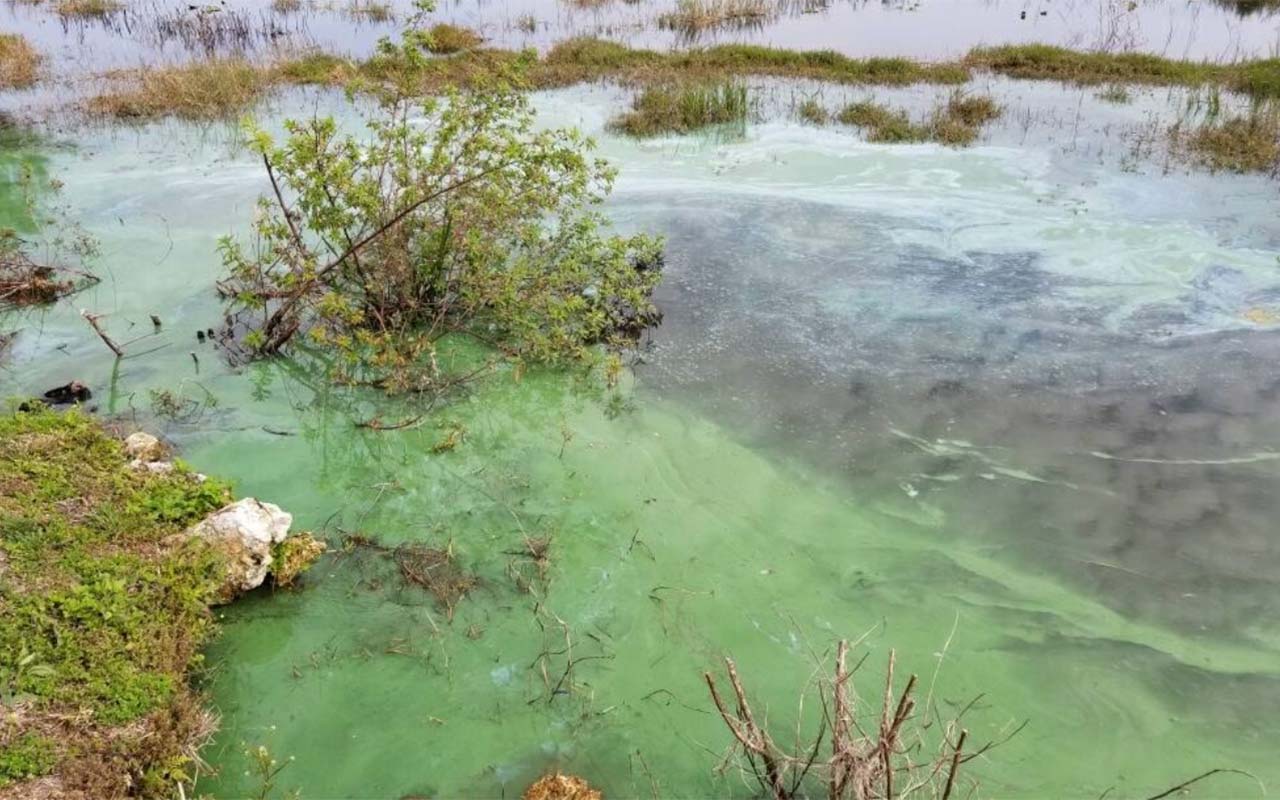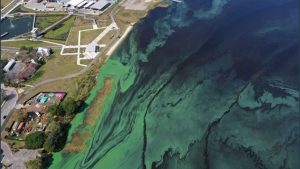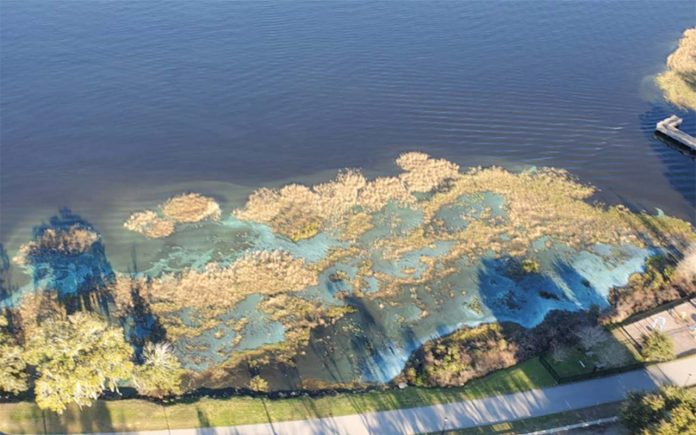Lake Minneola is part of the Clermont Chain of Lakes and is designated as one of the Outstanding Florida Waters (OFW). An OFW is a water body designated worthy of special protection because of its natural attributes. In addition, Lake Minneola also provides recreational access for swimming, fishing and boating for residents through the use of Waterfront Park and the new public boat ramp. In January 2020, the presence of blue-green algae appeared on the lake and remained throughout the month of March.

Blue-green algae, also known as cyanobacteria, are actually a group of photosynthetic bacteria that many people refer to as “pond scum.” Most species are buoyant and will float to the surface. Blue-green algae are present in all Florida freshwater lakes and ponds but can grow very quickly in number when the water is warm and enriched with nutrients like phosphorus or nitrogen. Nutrients can be carried into water bodies as a result of many human activities, including agriculture, discharge of stormwater or sewage, and use of phosphorus-based fertilizers and detergents.
The Lake County Water Authority Board of Trustees and staff members serve to protect the freshwater resources of Lake County. Recently staff coordinated several water quality projects with Wood Environment & Infrastructure Solutions, Inc. to analyze surface water runoff and groundwater seepage entering Lake Minneola. It is anticipated the 12-month study will identify a source of nutrients contributing to the blue-green algae bloom. If a source is identified the LCWA will coordinate with local county and city governments to develop a scope of work to reduce the number of nutrients entering the lake.
In addition, the St. Johns River Water Management District (SJRWMD) is conducting a pilot-scale project funded by the state’s Blue-Green Algae Task Force to monitor and treat cyanobacteria in Lake Minneola from September 2020 to February 2021. The project will utilize LakeGuard® which is a new surface applied, slow-release, hydrogen peroxide-based product that kills blue-green algae cells when it comes into contact at the water’s surface. In the event algae, populations reach unacceptable thresholds an initial treatment would occur, followed by additional treatments as necessary. Data collected would be posted on the SJRWMD website to keep the public informed of the project’s progress. Residents noticing an alga bloom occurring on Lake Minneola are requested to email minneola@bgtechs.com. A rapid response team would be available to quickly reply to the inquiry and assess the situation.
 While these studies may identify sources of pollution and help control blue-green algae blooms, maintaining the pristine waters in Lake Minneola and other waterbodies on the Clermont Chain of Lakes, Lake County residents need to join in promoting healthy lakes. Minimize fertilizer use and follow the guidelines in Lake County’s fertilizer ordinance to observe a no-fertilizer zone within 15 feet of water bodies and adding an additional 15 feet as a low maintenance zone. Together we all make a difference.
While these studies may identify sources of pollution and help control blue-green algae blooms, maintaining the pristine waters in Lake Minneola and other waterbodies on the Clermont Chain of Lakes, Lake County residents need to join in promoting healthy lakes. Minimize fertilizer use and follow the guidelines in Lake County’s fertilizer ordinance to observe a no-fertilizer zone within 15 feet of water bodies and adding an additional 15 feet as a low maintenance zone. Together we all make a difference.
For more information on the Lake County Water Authority’s programs, visit www.lcwa.org or call 352-324-6141.






